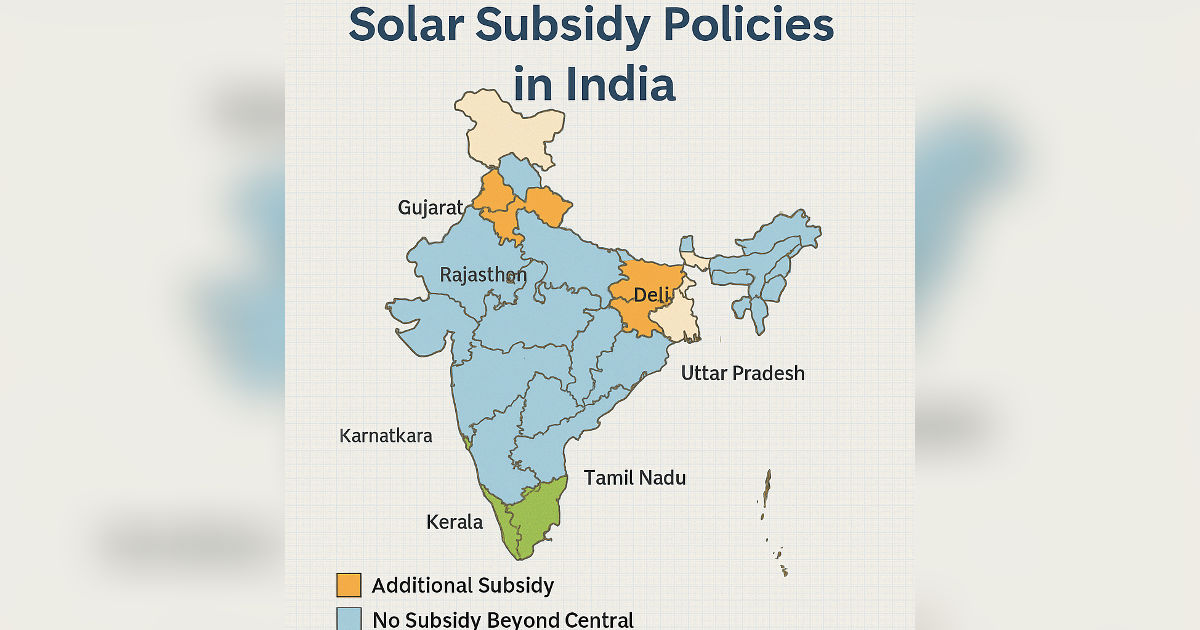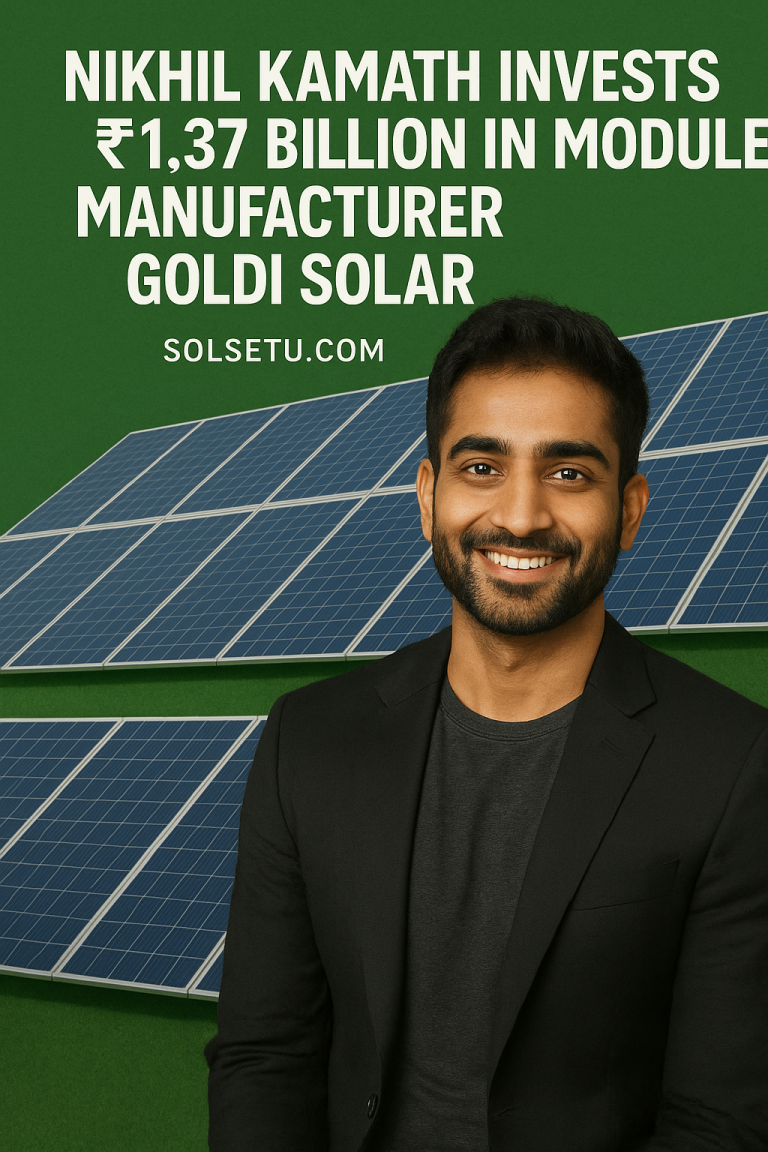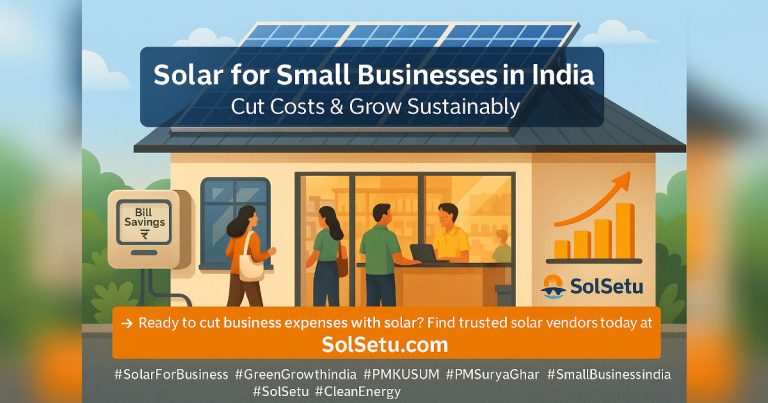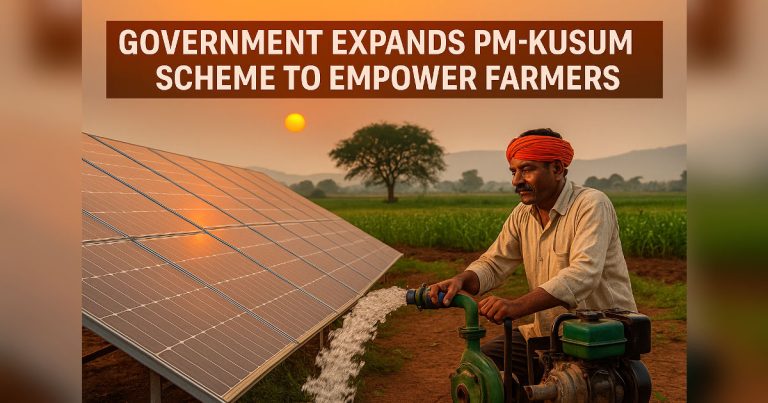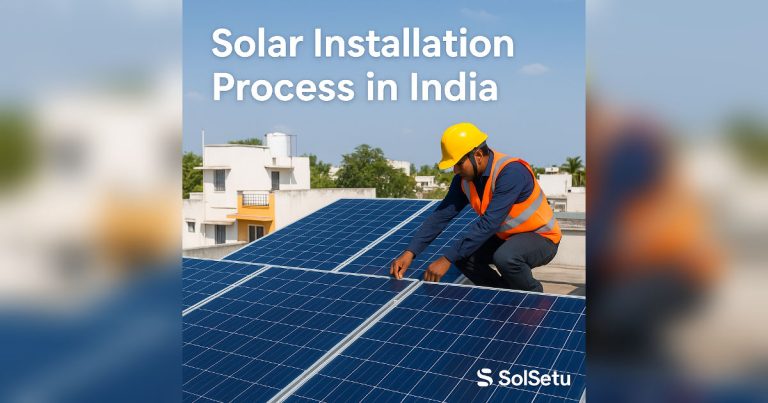State-Wise Solar Subsidy Policies in India (2025 Guide)
State-Wise Solar Subsidy Policies in India (2025 Guide)
Published by: SolSetu News Desk |
India’s new energy push under PM Surya Ghar Muft Bijli Yojana has standardized central subsidies, but states still play a critical role via **top-up incentives**, **net metering rules**, and **state solar policies**. In this guide, we break down key state-wise subsidy policies, advantages, and application pointers for rooftop solar in 2025.
📌 Central Baseline: MNRE / PM Surya Ghar Scheme
Under the Grid-Connected Rooftop Solar Programme, homeowners receive **Central Financial Assistance (CFA)**—up to **40% subsidy** (depending on capacity) — for residential rooftop systems. :contentReference[oaicite:0]{index=0} The **PM Surya Ghar Muft Bijli Yojana** builds on this with a fixed one-time subsidy disbursed via DBT, and aims to provide up to **300 units of free electricity/month** to beneficiary households. :contentReference[oaicite:1]{index=1} Note: “Special category states” are eligible for an additional **10% subsidy per kW** under the PM scheme. :contentReference[oaicite:2]{index=2}
State Top-Up Subsidies & Policies — Selected States
Here’s a snapshot of what some key states are doing in 2025. (Always check latest state DISCOM or energy dept site before applying.)
Gujarat
- State scheme: **Surya Gujarat Residential Rooftop Solar Scheme** (allows net metering up to 4 MW) :contentReference[oaicite:3]{index=3}
- State subsidy: ₹10,000 per kW for residential installations (up to 3 kW) :contentReference[oaicite:4]{index=4}
- Net metering: streamlined processes; Gujarat leads in PM Surya Ghar installations. :contentReference[oaicite:5]{index=5}
Maharashtra
- No large state-level subsidy beyond MNRE baseline currently in many areas. :contentReference[oaicite:6]{index=6}
- However, in 2025 Maharashtra launched **SMART Solar Scheme**: additional subsidies for low-consumption (below 100 units) homes, BPL, SC/ST households. :contentReference[oaicite:7]{index=7}
- Net metering is supported via MSEDCL in most regions.
Rajasthan
- State solar policy: Rajasthan Solar Energy Policy 2019; net metering allowed up to 1 MW. :contentReference[oaicite:8]{index=8}
- No strong direct state subsidy currently, but state is enhancing access via new net metering rules (e.g. virtual and group net metering) and quicker approvals. :contentReference[oaicite:9]{index=9}
Tamil Nadu & Karnataka
- Tamil Nadu: Central subsidies apply; state-level incentives are limited. Net metering available for domestic users. :contentReference[oaicite:10]{index=10}
- Karnataka: No additional subsidy; but state electricity scheme **Gruha Jyoti** offers free electricity (but not subsidy per se) to households (up to ~200 units). :contentReference[oaicite:11]{index=11}
Kerala
- Under state solar energy policy, some systems up to 3 kW may get 40% subsidy, and 20% for 3-10 kW, aligned with MNRE rates. :contentReference[oaicite:12]{index=12}
- Kerala recently waived application & registration fees under PM Surya Ghar to streamline adoption. :contentReference[oaicite:13]{index=13}
Uttar Pradesh
- Solar subsidy in UP is managed via central DBT route; residential consumers are eligible for fixed subsidy under Rooftop Solar Programme. :contentReference[oaicite:14]{index=14}
- Net metering is actively promoted by UPPCL. :contentReference[oaicite:15]{index=15}
Delhi
- Delhi government offers state subsidy over and above central subsidy: ₹10,000 per kW (for systems up to 3 kW) as of revised Solar Policy 2025. :contentReference[oaicite:16]{index=16}
- Virtual Net Metering (VNM) allowed for group housing societies. :contentReference[oaicite:17]{index=17}
Comparative Table: State Incentives (2025 Snapshot)
| State | State Subsidy / Add-on | Net Metering / Policy Highlights |
|---|---|---|
| Gujarat | ₹10,000/kW (residential) up to 3 kW | Net metering up to 4 MW, efficient DISCOMs |
| Maharashtra | SMART Scheme: extra subsidy for ≤100 units usage, BPL/SC/ST | Standard net metering |
| Rajasthan | No major direct subsidy now | Virtual & group net metering, faster approvals |
| Kerala | Up to 40% on ≤3 kW systems | Waived registration fees under Surya Ghar |
| Uttar Pradesh | Central DBT subsidy for residential schemes | Active net metering via UPPCL |
| Delhi | ₹10,000/kW (upto 3 kW) | VNM, group housing support |
Why States Still Matter — Beyond Central Subsidy
- Top-up subsidies: In some states, these reduce the net cost further beyond the central CFA.
- Net metering policy and settlement: Rates, billing rules, rollover, and group metering vary a lot by state. :contentReference[oaicite:18]{index=18}
- Approval processes & timelines: Some states streamline approvals or offer auto-approvals if delays pass certain thresholds (e.g. Rajasthan). :contentReference[oaicite:19]{index=19}
- Fees & charges: States can waive application/metering fees (Kerala example). :contentReference[oaicite:20]{index=20}
How to Apply — Steps (State + Central)
- Check your **state DISCOM / electricity board** portal for rooftop solar or net metering forms.
- Verify if there is a state-level subsidy or top-up scheme in your state.
- Submit application via National Rooftop Solar portal (if part of PM Surya Ghar), or state scheme site. :contentReference[oaicite:21]{index=21}
- Get approval, install through **MNRE empaneled vendor**. :contentReference[oaicite:22]{index=22}
- State / DISCOM conducts inspection, installs net meter, finalizes subsidy disbursement.
Key Tips & Warnings
- State subsidy schemes often have **limited quotas** or are time-bound. Don’t wait too long. :contentReference[oaicite:23]{index=23}
- If your state has **virtual / group net metering rules**, societies or housing complexes might benefit more. :contentReference[oaicite:24]{index=24}
- Monitor **net metering settlement rate** — excess generation compensation (APPC, feed-in tariffs) differ by state. :contentReference[oaicite:25]{index=25}
- Ensure your solar panels, inverters etc are **MNRE / BIS approved** to qualify for subsidy. :contentReference[oaicite:26]{index=26}
Conclusion
While the central government subsidy under PM Surya Ghar standardizes support across India, **state policies and top-ups remain pivotal**. In favorable states like Gujarat, Tamil Nadu, Kerala, and Delhi, extra incentives and favorable net metering rules can meaningfully reduce your solar cost. Conversely, in states without top-ups, your gains depend more on central subsidy and net metering economics.
Check your local DISCOM & state energy department site for the latest updates — policies evolve rapidly in 2025.

